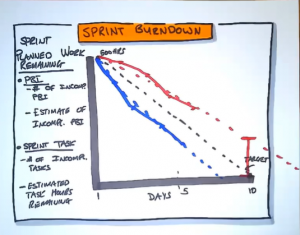People Over Process: Behind Agile’s Core Principles
People Over Process: Behind Agile’s Core Principles
In “People Over Process,” Michael K Levine explains how the focus on “Individuals and Interactions” over “Processes and Tools” is key to Agile. That’s why it was the first value listed in the Manifesto for Agile Software Development. 20 years on, we can see why and how this core value influences everything Agile accomplishes when adopted by businesses – and why industry giants are making the switch.
What it means to place processes over individuals
How does a workplace maintain or grow its output? Some employers develop techniques after months or years of troubleshooting and then rigidly stick to their formula, swapping out employees as necessary to ensure their workforce adheres to these principles.
Conceptually, it makes sense. Processes are developed because businesses seek to minimize losses and risks while maximizing profits. Entrepreneurs often reduce methods to 0s and 1s, optimizing operations according to the most efficient method at the time.
While some employers are more comfortable with this degree of control, it comes with a price — placing the team members’ needs lower on the priority list and stifling creativity and flexibility.
It’s also a stark contrast to how Agile is meant to operate.
The Agile difference – an individual-first approach
Agile organizations are built on adaptability — requiring cooperation from your team in the pursuit of a common goal, maintaining communication with consumers to create products they’ll want to purchase, and the ability to produce the goods at an efficient rate.
These three components working in tandem don’t just inspire flexibility; they require it. What if a global event (like a pandemic) causes the needs and desires of the market to change? Likewise, what if a shift in how your workplace operates fundamentally changes the processes you’ve been employing up to that moment? It could be as simple as changing healthcare protocols, or as dire as wages no longer being sufficient to provide a livelihood for your employees.
For some businesses, this would mean stubbornly sticking to the way things have always been done and trying to force the market and team members to go along with it. However, Agile companies aren’t just willing to adapt – they’re ready to adapt.
There are considerable benefits to this flexibility, besides the ability to keep releasing products without disrupting your supply line. Your employees will appreciate their needs being accommodated, resulting in a greater affinity for you as their employer and the company as a whole, boosting their productivity and the quality of goods they’re creating.
This, in turn, reaches your consumers, increasing their affinity for your company as a provider of high quality goods, turning them into loyal customers and making them more likely to spread the word to their peers, who also begin to look to you as a reliable supplier.
Placing “people over process” has a domino effect. By placing individuals before processes or tools; by treating your workers not just as subordinates, but as partners in the creation of high quality goods or services, you improve your business’s ability to deliver for employees and customers alike. That’s what sets Agile organizations apart from the rest.


